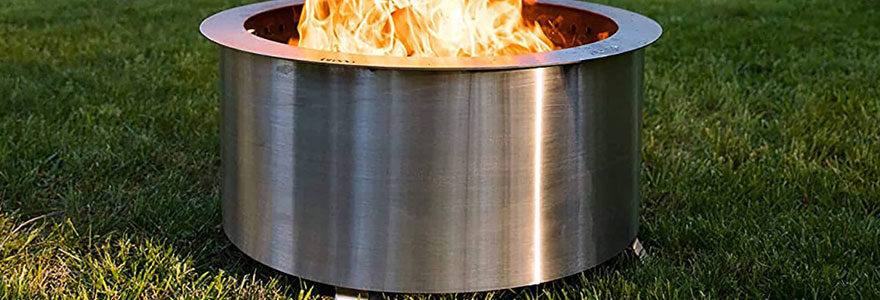A smokeless fire keeps you away from nursing sore eyes and a dry throat. Also, your clothes and hair are free from the pungent smell of smoke. For instance, to enjoy that well-deserved campfire with your loved ones, you need to be well versed with the options available for acquiring or setting up a smoke-free fire pit.
Smokeless fire pits
A smokeless fire saves you the trouble of a “hide-and-seek” game between you and the smoke which is usually emitted. A smokeless fire pit is a compact and portable innovation that burns clean, smoke-free fires and is ready to use for any occasion. Popular options include the Solo Stove Bonfire Fire Pit. However, you may prefer to get hands-on and build the fire yourself. In such a case, the fire you build will probably be smoky, for a couple of reasons...
What might cause your fire to smoke
A smoky fire can be attributable to:
- Use of wet or freshly cut wood.
Freshly cut wood contains a substantial amount of moisture. The same applies to wood that has gathered wetness from being rained on or for another reason. Wet or freshly cut wood takes a long time to burn and due to the need for more energy, it ends up emitting a lot of smoke. Softwood such as cedar and pine also produce a great deal of smoke as the high sap content in them is getting burned.
- Improper setup of the fire.
As the fire is being built, the materials used such as stones and wood can reduce the airflow if not properly set up. When the circulation of air is limited, it implies that the fire is deprived of oxygen and therefore, it tends to produce smoke.
- Addition of unnecessary material to the fire.
There might be a tendency to throw almost anything into the fire, such as plastic or glass cans, ignoring the material’s combustion rate and its effect when it gets burnt. Some items take long for them to be fully consumed by the fire, and they congest the airflow. Before the fire fully burns this kind of fuel, the emission of smoke is inevitable.
With the understanding of the source of the smoke, we now know the counter actions required, to build a smoke-free fire.
Ways to eliminate the smoke
Fixing the problem after determining its cause should now be a walk in the park. Below are some guidelines towards having a smokeless fire:
- Use dry wood.
To ensure that the fire you build remains smoke-free, you should use dry firewood. When the wood is dry, it means that the amount of moisture in it is very little and therefore, less energy and time is required for it to burn. As a result, you will not have to be worried about smoke being emitted. You should also see to it that your firewood is stored in a moist free place to prevent it from gathering any wetness. On top of this, always choose to use hardwood over softwood. Naturally, hardwood is drier as the amount of sap in it is less than that in softwood.
- Ensure adequate air circulation.
Setting up the fire and stacking of wood or any other material should be done effectively such that there is room for air to flow freely without any hindrance. On account of this, your fire has enough supply of oxygen and this eliminates smoldering.
- Avoid adding unneeded material into the fire.
Aside from firewood, the proper type of firewood for that matter, anything else might be unnecessary and not good for the fire. This unneeded material such as cans, not only blocks the circulation of air but also produces toxic smoke and a bad smell too. It is therefore advisable to be very keen on the kind of fuel being added to the fire.

